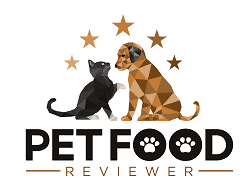If you study the ingredient list of your dog’s favorite food, you almost always come across ingredients you aren’t familiar with, and meat meals like Lamb Meal may be one of those.
While Lamb is well-known, many dog owners are unsure what Lamb Meal means and if it’s something their dog should be eating.
What Is Lamb Meal?
Lamb Meal is a concentrated form of Lamb meat and tissue that has been processed to remove most of its moisture content.
This process, known as rendering, is done on an industrial scale and produces other well-known animal by-products like Beef Tallow.
Many dog owners do not realize that whole meat ingredients like Lamb, Chicken, or Beef contain a very high portion of water or moisture, as much as 75%.
You can see a few examples in the below chart.
As you can see, Lamb itself doesn’t contain quite as much moisture as other meats, but at approximately 60%, it is still considerable.
This high moisture content means that once this meat is cooked during the production process of dry dog food recipes, most of this moisture is lost, leaving a relatively small portion of meat remaining.
But the portion remains relatively stable due to meat meals like Lamb Meal having this moisture removed in advance.
Lamb Meal is an example of an accountable and transparent meat meal ingredient as it must be produced from Lamb-based ingredients.
This contrasts with other meat meals like Bone and Meat Meal, which are far less accountable and could be made from various ingredients.
You can learn more about Bone Meal in our dedicated discussion – Bone Meal In Dog Food.
Why Is Lamb Meal In Dog Food
Nutrition
As we touched on earlier, Lamb Meal has had most of its moisture removed, which means it is a very nutritionally dense ingredient packed with animal-based protein and fat.
This nutritional density allows pet food manufacturers to include a relatively small portion of Lamb Meal to provide nutrition compared to whole lamb ingredients.
Similar to other red meat ingredients, Lamb contains a relatively high proportion of fat compared to some leaner meats, with a ratio of protein to fat of 30:70, although this can vary depending on the source.
Cost
It is also typically the case that meat meals like Lamb Meal are cheaper to purchase than whole lamb ingredients.
This is because much of the Lamb used to produce Lamb Meal is scraps and less desirable cuts of meat rather than those you’d be familiar with in the grocery store.
While that may not sound appealing, those scraps and cuts are still very nutritionally dense, and dogs will not turn their nose up at them.
Storage & Safety
An often overlooked reason that meat meals like Lamb Meal are used in favor of whole meat ingredients is that they are far less prone to spoilage once they have undergone rendering.
This is an essential trait in the pet food manufacturing industry and reduces the risk of issues that could lead to recalls.
It also allows manufacturers to more easily transport and store the ingredients over a more extended period of time, enabling a more efficient supply chain.
Dog Food Brands That Use Lamb Meal
Lamb Mnly isn’t the most popular meat meal in dog food recipes, but it does see consistent use throughout the industry.
Some well-known dog food brands use Lamb Meal in their recipes, such as Purina Pro Plan, Hill’s Science Diet, Diamond, Iams, Wellness, Zignature, Canidae, Rachael Ray Nutrish, Victor, Instinct, and Nature’s Logic.
While recently researching the use of ingredients in dog food recipes, we found that of the 100 most popular dry dog food recipes on Chewy.com, 9 of those contained Lamb Meal, which is roughly in line with what we expected.
Nature’s Logic’s Canine Lamb Meal Feast is an excellent example of the use of Lamb Meal in dog food, and you can see its ingredient list below.
As you can see, Lamb Meal is the recipe’s most abundant ingredient, and given its density, this means there is a considerable portion of Lamb present.
However, other brands tend to use a mix of Lamb Meal and Lamb in their recipes, such as Zignature’s Select Cuts Lamb & Lamb Meal formula.
As you can see above, Lamb is the recipe’s most abundant ingredient and is joined by a smaller portion of Lamb Meal.
However, given its higher density, it may be the case that there is more Lamb in that smaller portion of Lamb Meal than there is in the larger portion of Lamb.
Based on our experience from the last few years, the use of Lamb and Lamb Meal is only likely to increase as dog owners look to provide their dogs with a more varied and appealing diet.



